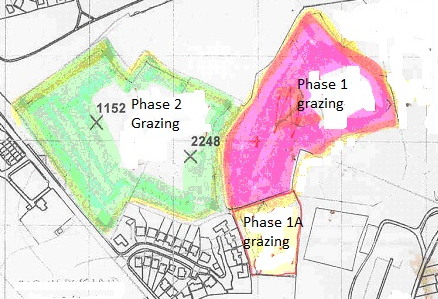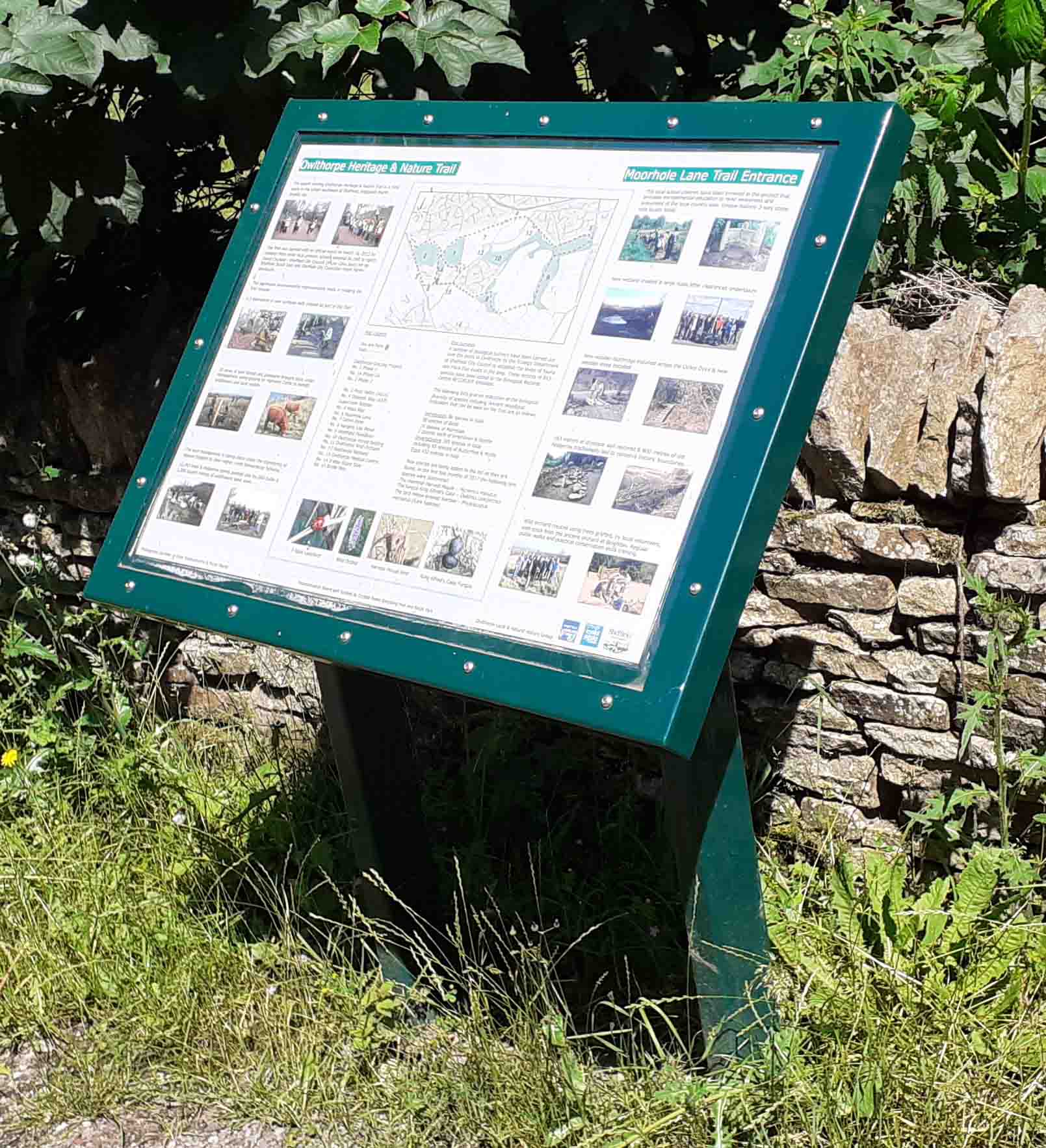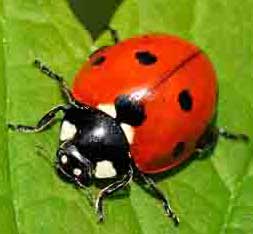Ecological Surveys |
|
Owlthorpe Meadows Invertebrate Survey - 2011Derek Whiteley Records added to Sheffield Biological Records Centre RECORDER database. Surveyed on 19 May 2011 , 1 June 2011 , 14 June 2011 and 27 June 2011 The survey was designed to cover the spring period, to complement the summer survey of 2010, but it was not possible to start until 19 May 2011 owing to contractual delays. Additional species will occur in March and April that will have been missed by the two surveys. Nevertheless some good data were collected in 2011 adding to our knowledge and ecological understanding of the sites. Areas surveyed in 2011 Phase 1 grazing fields – outlined in pink Phase 1A grazing field – outlined in yellow Phase 2 grazing fields – outlined in green.
Species Biodiversity 162 species have been identified from the 2011 survey of which 112 were new for Owlthorpe Meadows. 140 species were recorded in 2010 (mid July to September) 252 species is the combined total for both years. This list includes some species that are nationally localised and some species that are scarce in Sheffield . see APPENDIX on a separate file – all species listed in alphabetical order for easy reference. Including species ecology notes to assist with detailed management of these species on site. Phase 1 Grazing Field 70 species were found in this area in 2011. At the time of the survey, this area had not been grazed and had recovered from grazing in 2010 to reveal a rich mosaic of grassland, bramble scrub and tall herb vegetation, which proved to be very productive for flying insects. Plenty of bumble bees (especially Red-tailed Bumble Bees), hive bees, soldier beetles, green metallic flower beetles, grasshopper nymphs, hoverflies and picture wing flies. Some grasshoppers had matured by 14 th June and were courting. Of special interest was a colony of Tree Bumblebees, attracted to brambles. This European species was new to Britain in 2001, and new to Sheffield in 2008, and is now colonising the SE corner of the City. Good numbers of Robber Flies of two species are usually indicative of good quality grassland in Sheffield . Also of special interest was the abundance of the attractive picture wing fly Urophora cardui in the adult form, resulting from the large number of thistle galls found in the summer 2010 survey. (this species was new to Sheffield in 2010, and seems to be colonising SE Sheffield now) Other localised species associated with good quality grasslands in Sheffield include the hoverfly Eupeodes latifasciatus , the snail-killing fly Coremacera marginata , and three species of sawfly known to breed in large grass stems. Species list for Owlthorpe Phase 1 grassland Species Common Name National Status Tachypodoiulus niger White-legged Snake Millipede Common Lithobius variegatus Striped Centipede Common Chorthippus brunneus Common Field Grasshopper Common Cercopis vulnerata Red & Black Froghopper Common Chrysoperla carnea a green lacewing Common Sphaeridium scarabaeoides a scavenger water beetle Common Philonthus tenuicornis a rove beetle Local UK Athous haemorrhoidalis Common Brown Click Beetle Common Agriotes acuminatus a click beetle Common Cantharis cryptica a soldier beetle Common Cantharis decipiens a soldier beetle Common Cantharis nigricans Large Grey Sailor Beetle Common Cantharis rustica Large Black Sailor Beetle Common Malachius bipustulatus Malachite Beetle Common Brachypterus urticae Nettle Pollen Beetle Common Adalia bipunctata Two-spot Ladybird Common Coccinella septempunctata Seven-spot Ladybird Common Oedemera lurida a thick-legged flower beetle Local UK Perapion curtirostre a seed weevil Common Phyllobius roboretanus Small Green Nettle Weevil Common Panorpa communis a scorpion fly Common Pieris napi Green-veined White Common Anthocharis cardamines Orange Tip Common Lycaena phlaeas Small Copper Common Pararge aegeria Speckled Wood Common Aphantopus hyperantus Ringlet Common Tyria jacobaeae Cinnabar Common Tipula lateralis a cranefly Common Bibio leucopterus a st mark's fly Unknown Microchrysa cyaneiventris a soldier fly Common Microchrysa polita a soldier fly Common Rhagio scolopaceus Common Downlooker Fly Common Dioctria atricapilla a robber fly Local UK Dioctria rufipes a robber fly Local UK Empis (Kritempis) livida a dance fly Common Melanostoma mellinum a hoverfly Common Platycheirus albimanus a hoverfly Common Platycheirus angustatus a hoverfly Common Eupeodes latifasciatus a hoverfly Local UK Sphaerophoria interrupta a hoverfly Local UK Sphaerophoria scripta a hoverfly Common Syrphus ribesii a hoverfly Common Syrphus torvus a hoverfly Common Cheilosia albitarsis a hoverfly Common Cheilosia pagana a hoverfly Common Eristalis tenax a hoverfly Common Helophilus pendulus a hoverfly Common Myathropa florea a hoverfly Common Xylota segnis a hoverfly Common Urophora cardui a gall fly Common Urophora jaceana a gall fly Common Chaetostomella cylindrica a gall fly Common Terellia ruficauda a gall fly Common Psila merdaria a psilid fly Common Coremacera marginata a snail-killing fly Local UK Palloptera campta a picture-wing fly Common Opomyza germinationis an opomyzid fly Common Tachina fera a tachinid fly Common Gymnocheta viridis Tachinid Greenbottle Local UK Cephus cultratus a sawfly Local UK Calameuta pallipes a sawfly Common Arge cyanocrocea a sawfly Local UK Rhogogaster viridis a sawfly Common Bombus lucorum White-tailed Bumble Beetle Common Bombus terrestris Buff-tailed Bumble Bee Common Bombus lapidarius Large Red Tailed Bumble Bee Common Bombus pratorum Early Bumble Bee Common Bombus pascuorum Common Carder Bee Common Bombus hypnorum European Bumblebee recently naturalised Apis mellifera Honey Bee Common Phase 1a Grazing Field This site was not surveyed in 2010 as a separate entity. 59 species were identified in 2011, when the field was recovering from grazing earlier in the year. For insects, the habitat has a nice structure with umbellifers, bramble, thistles, and a range of grasses being the key microhabitats. Small patches of bare ground in sunny area are also important. It is worth tolerating a small patch of nettles, but not too many. There was a good range of insects – including plenty of feeding bumble bees and hive bees. Grasshopper nymphs were common. Plenty of picture wing flies (associated with thistles, burdocks and knapweeds), grassbugs and flower bugs, soldier beetles, Tree Wasps and craneflies. The highlight was the discovery of the Green Jewel Beetle, which appears to be new to Sheffield . These beetles are dead wood feeders in their larval stages and probably originated from oak or ash bark nearby. An exciting find. The more frequent Rhinoceros Beetle was also found here and probably originated from a similar local tree or log. Conservation of any dead wood in the vicinity of this field is clearly desirable. Other interesting species include the picture wing fly Tephritis formosa , breeding in Sow Thistles, two species of snail-killing flies usually associated with good quality dry grasslands, and quite localised in Sheffield . The Reed Stem Borer is a sawfly that breeds in the stems of reeds and large grasses and is Notable (uncommon) for the north of England . Adult thistle gall flies Urophora cardui (see above) were also found in this field. The importance of thistles on the site cannot be overestimated. Species list for Owlthorpe Phase 1A grassland Discus rotundatus a discus snail Common Arion ater Great Black Slug Common Arion subfuscus Dusky Slug Common Arion ater rufus Red slug Common Cepaea hortensis White-lipped Snail Common Tachypodoiulus niger White-legged Snake Millipede Common Haplophilus subterraneus a centipede Common Lithobius forficatus Common Centipede Common Chorthippus brunneus Common Field Grasshopper Common Forficula auricularia Common Earwig Common Heterogaster urticae Nettle Groundbug Common Anthocoris nemorum Common Flower Bug Common Capsus ater Common Black Plantbug Common Leptopterna dolabrata a grassbug Common Harpalus rufipes Strawberry Seed Beetle Common Sinodendron cylindricum Rhinoceros Beetle Common Athous haemorrhoidalis Common Brown Click Beetle Common Rhagonycha fulva Common red soldier beetle Common Adalia bipunctata Two-spot Ladybird Common Coccinella septempunctata Seven-spot Ladybird Common Phyllobius roboretanus Small Green Nettle Weevil Common Agrilus species Green Jewel Beetle New to Sheffield Agapeta hamana a micro-moth Common Ochlodes venata Large Skipper Local UK Pieris rapae Small White Common Aglais urticae Small Tortoiseshell Common Agrotis exclamationis Heart and Dart Common Rivula sericealis Straw Dot Common Nephrotoma flavescens a cranefly Common Tipula lateralis a cranefly Common Chloromyia formosa a soldier fly Common Neoascia podagrica a hoverfly Common Urophora cardui a gall fly Common Urophora jaceana a gall fly Common Urophora stylata a gall fly Common Chaetostomella cylindrica a gall fly Common Tephritis formosa a gall fly Local UK Xyphosia miliaria a gall fly Common Coremacera marginata a snail-killing fly Local UK Euthycera fumigata a snail-killing fly Local UK Opomyza germinationis an opomyzid fly Common Phytomyza ilicis Holly Leaf Gall Fly Common Calameuta filiformis Reed Stem Borer Nr Regionally Arge cyanocrocea a sawfly Local UK Tenthredopsis nassata a sawfly Common Rhogogaster viridis a sawfly Common Lasius niger Small Black Ant Common Dolichovespula sylvestris Tree Wasp Common Bombus lucorum White-tailed Bumble Bee Common Bombus lapidarius Large Red Tailed Bumble Bee Common Bombus pascuorum Common Carder Bee Common Apis mellifera Honey Bee Common Oniscus asellus Common Shiny Woodlouse Common Philoscia muscorum Long-legged Woodlouse Common Porcellio scaber Common Rough Woodlouse Common Phase 2 Grazing Fields These fields were actively being grazed during the period of the survey, and much of the ground vegetation was very short indeed and held little of interest. Specimens were obtained by sweeping foliage and marginal areas that cattle had not grazed. Some extra species were found by stone turning and hand searching through grass roots. Only 57 species were identified in 2011, but these included some interesting finds. The colony of Slender Ground Hoppers (Sheffield Red Data Book ) found in 2010 was still present. This species prefers short vegetation in damp areas and is compatible with grazing cattle. It likes patches of damp mud and wet ruts. The area will benefit from some careful clearance and a grazing regime that allows plants to flower and seed in the summer. A greater range of plants in flower would be useful, and some open sunny areas of grassland with grass stems of varying height. Grazing regime needs to be carefully managed to prevent poaching and allow some growth. As always, thistles, knapweeds, and a variety of low growing yellow or white flowers will promote a greater diversity of insects. Need to retain some Ragwort for Cinnabar moths. Ideally the Phase 2 fields should be surveyed in 2012 to monitor the effect of intensive grazing in 2011. Species list for Owlthorpe Phase 2 grassland Boettgerilla pallens Worm Slug Naturalised Cepaea hortensis White-lipped Snail Common Tachypodoiulus niger White-legged Snake Millipede Common Cylindroiulus punctatus Blunt-tailed Snake Millipede Common Lithobius forficatus Common Centipede Common Tetrix subulata Slender Ground Hopper Local RDB Forficula auricularia Common Earwig Common Acanthosoma haemorrhoidale Hawthorn Shieldbug Common Elasmostethus interstinctus Birch Shieldbug Common Anthocoris nemorum Common Flower Bug Common Capsus ater Common Black Plantbug Common Philaenus spumarius Cuckoo-spit Insect Common Chrysopa perla a green lacewing Common Cantharis cryptica a soldier beetle Common Cantharis nigricans Large Grey Sailor Beetle Common Rhagonycha limbata a soldier beetle Common Adalia bipunctata Two-spot Ladybird Common Coccinella septempunctata Seven-spot Ladybird Common Calvia quattuordecimguttata Cream-spot ladybird Common Oedemera lurida a thick-legged flower beetle Local UK Gastrophysa viridula Green Dock Beetle Common Phyllobius roboretanus Small Green Nettle Weevil Common Phyllobius viridiaeris Green Nettle Weevil Local UK Panorpa communis a scorpion fly Common Pieris brassicae Large White Common Pieris rapae Small White Common Pieris napi Green-veined White Common Lycaena phlaeas Small Copper Common Inachis io Peacock Common Tyria jacobaeae Cinnabar Common Microchrysa polita a soldier fly Common Platycheirus albimanus a hoverfly Common Platycheirus angustatus a hoverfly Common Platycheirus clypeatus sens. str. a hoverfly Common Leucozona lucorum a hoverfly Common Sphaerophoria scripta a hoverfly Common Syrphus torvus a hoverfly Common Eristalis pertinax a hoverfly Common Merodon equestris Greater Bulb-fly Common Urophora cardui a gall fly Common Urophora jaceana a gall fly Common Urophora stylata a gall fly Common Terellia ruficauda a gall fly Common Tephritis cometa a gall fly Local UK Pherbellia albocostata a snail-killing fly Common Tetanocera elata Common Slug-killing Fly Common Rhogogaster viridis a sawfly Common Tryphon trochanteratus an ichneumon wasp Unknown Lasius niger Small Black Ant Common Dolichovespula sylvestris Tree Wasp Common Vespula vulgaris Common Wasp Common Bombus lucorum White-tailed Bumble Bee Common Bombus lapidarius Large Red Tailed Bumble Common Bombus pascuorum Common Carder Bee Common Bombus hypnorum European Bumblebee Naturalised Oniscus asellus Common Shiny Woodlouse Common Philoscia muscorum Long-legged Woodlouse Common
Derek Whiteley October 2011 |
|
-
-
-
- Home Page
-
- Official LettersPublic Inquiry
- Coal Mining in Owlthorpe
- Owlthorpe Heritage & Nature Trail
- Owlthorpe History
- Owlthorpe Grasslands
- Ecological Owlthorpe
- Owlthorpe Wild Orchard Owlthorpe Fields Owlthorpe WetlandsHanging Lea WoodWestfield PlantationOwlthorpe Forest Settings
- Birds
- Butterflies
- FloraInsects
-


